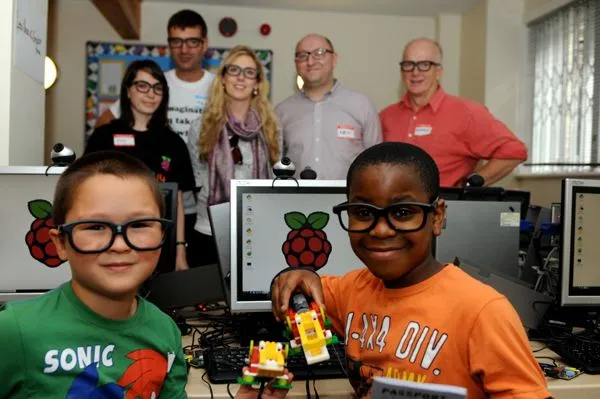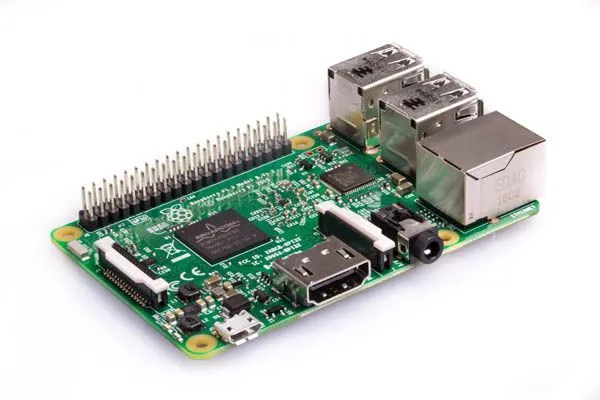When the university of Cambridge scientists’ team launched the Raspberry Pi in 2011, they didn't expect to sell more than a 1,000. It was sold as a $35 board for DIY project and erupted into a global phenomenon that has sold over 12 million units.

little more than a credit card-sized box of exposed circuit board. It is an entirely programmable PC that runs a free, open-source Linux operating system. It plugs into any TV, can power 3D graphics, connects to the Internet and, with a little cleverness, be used to create your own personalized robot slave. The computer's frame is crowded with two USB ports, an SD card slot, an Ethernet connection and microchip in the middle all powered by a universal USB mobile charger

The smartphone evolution has been beneficial because it has now replaced many different technologies and tools. It has merged all of this into a single device that fits in your pocket. It replaced the point-and-shoot camera, MP3 player, calculator, alarm clock, watch, radio, ebook reader, GPS, flashlight, compass, address book, photo album and much more. But as our phones grow in size and barely fit into our pockets, the trend is reversing itself. Our tech is changing…migrating from our phone and computers to all kinds of new things that using computer power to become smarter and join the connected world.
The success of the Raspberry Pi has three important effects:
- Broader applications: It shows that inexpensive devices are adequate enough for a lot of tasks
- The internet of things: It's a herald for the ability of the Internet of Things
- Education for the Developing world: It brings cheap Education for the Developing world
Broader applications
Because the Raspberry PI is an inexpensive computer, a worldwide developers’ community and a whole ecosystem have been established. More than eight million IT experts and hobbyists around the world are developing and modifying applications, devices, software and accessories for the Raspberry Pi family. The fact that it runs on UNIX gets many people in the Industrial control system’s attention. They can get their in- house software engineers to work with it. During Germany’s SPS IPC DRIVES fair last October, there were companies offering open, modular and comparatively cost-effective industrial PCs based on the Raspberry Pi Compute Module.
The internet of things
From a report according to Gartner and IDC , the Internet of Things on pace to grow from 6 billion devices in 2016 to over 25 billion in 2020. We're entering an era where technology will become smaller, cheaper, and far more inconspicuous. Conceivably, the flagship device of this new era is the Raspberry Pi.

Education for the Developing world
Currently, The US, UK, Australia and Japan lead the countries that have the most usage of the Raspberry pi. But now, in the developing world, the Raspberry Pi is making a big impact. This is because they make very good entry-level productivity computers. They are popular because they consume very low power. Countries like Kenya, Ghana and Nigeria are starting to deploy it in schools at a rapid pace.
How to teach with the Raspberry PI
You can teach your kids. The Raspberry Pi Foundation has released a free online training portal for anyone to learn about computing and teach children, anywhere in the world. The short courses include:
• How to prepare to Run a Code Club: this is a global network of volunteers and educators who run free coding clubs
for 9- to 13-year-olds. This short course will give you the confidence and skills to run a Code Club for young people.
• Object-oriented programming in Python: This will teach you object-oriented programming principles by creating
your own text-based adventure game in Python
• Teaching Physical Computing with Raspberry Pi and Python: It will provide knowledge of simple electronics and
computing, setting up your Raspberry Pi and writing your first program using the Python programming language.
• Teaching Programming in Primary Schools: This is designed for primary or K-5 teachers who are not subject
specialists. The course will introduce you to key programming concepts.
Conclusion
The world’s technology is advancing at a frightening speed. The next generation must be well educated to be financially free. At just the cost of a textbook, nearly everyone should be able to get a Raspberry Pi if they have the desire to learn and to potentially pursue new opportunities.
Thank you for reading

